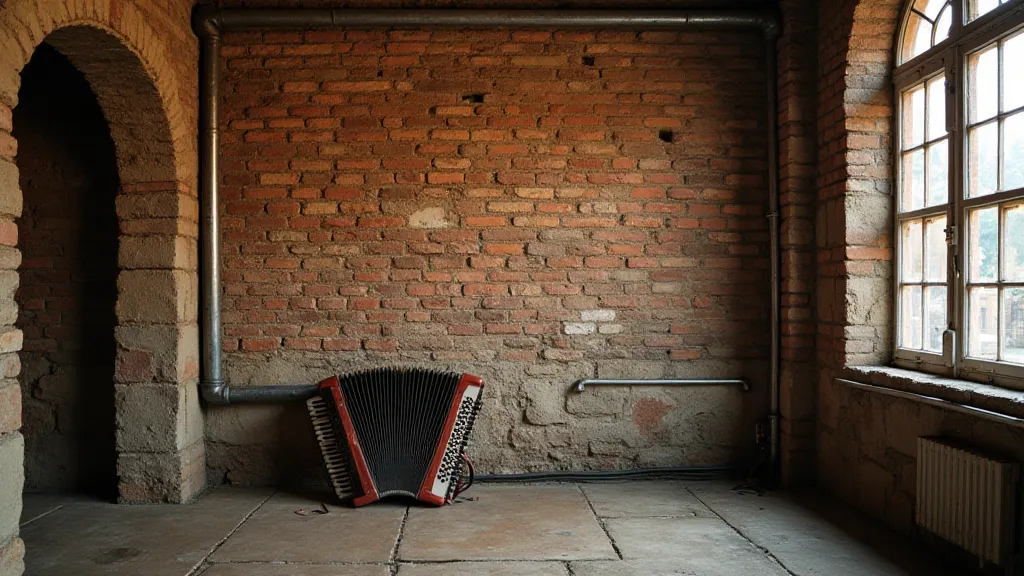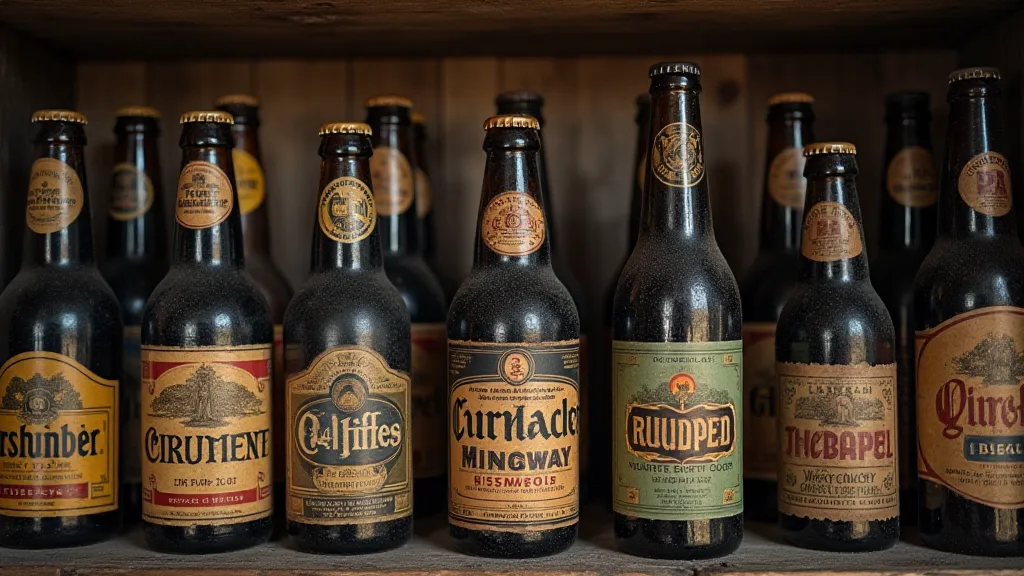The Copper Veins: Industrial Heritage & the Rise of Brewery Districts
There's a peculiar beauty in decay. Not the unsettling, sinister kind, but the poignant grace of a building bearing the etchings of time, whispering stories of industry and ingenuity. For decades, many urban landscapes bore the scars of abandoned factories, silent monuments to a bygone era. Then, something remarkable began to happen. A golden tide of hoppy goodness started to flow, revitalizing these forgotten spaces: the rise of brewery districts, a testament to how beer and urban renewal can intertwine.
The Ghosts of Industry
Consider, for a moment, the imagery of a defunct factory: brick walls stained with soot, towering smokestacks reaching for a perpetually overcast sky, the metallic tang of rust clinging to the air. These weren’t symbols of despair for everyone, though. They were, to a certain segment of artisans and entrepreneurs, potential canvases. The sturdy brickwork, the high ceilings – perfect for aging beer. The sheer scale – lending an air of gravitas, a connection to the very heart of a city’s working class history. My grandfather, a master accordion repairman, felt a similar connection to the crumbling workshops he’s resurrected over the years. He spoke of the character embedded within the warped wood and tarnished metal – a soul forged in labor, a tangible link to generations past. There’s something akin to that feeling when you walk through a revitalized brewery district. You’re not just tasting beer; you’re tasting history, a tangible connection to a community's industrial past.
Historically, many American cities boasted thriving brewery scenes, often clustered near rivers or railway lines – essential for transporting both raw materials and finished goods. The 19th century was a golden age for beer, with German immigrants playing a pivotal role in establishing breweries across the nation. Think Milwaukee, Pittsburgh, Minneapolis – cities built, in many ways, on the backs of brewers and the demand for crisp, refreshing beer. The rise of prohibition, however, dealt a devastating blow, leaving many breweries shuttered and their buildings abandoned. These once-bustling spaces fell into disrepair, becoming symbols of economic decline and lost opportunity. The lingering impact of this era is still felt today; understanding how The Stillborn Grain: How Prohibition’s Shadow Lingers in Regional Brewing shaped the landscape of American brewing provides essential context. It's a period of immense loss, but also a breeding ground for resilience and adaptation.

The Craft Beer Renaissance & Urban Renewal
The late 20th century witnessed a gradual shift. The rise of “craft beer” – smaller, independent breweries focusing on quality and innovation – sparked a renewed interest in the brewing process and the communities that fostered it. This wasn't just about the beer itself; it was about the experience, the authenticity, the story behind the brew. Simultaneously, urban planners and developers began to recognize the potential of revitalizing abandoned industrial areas. Breweries, with their inherent appeal and potential for attracting foot traffic, became an ideal anchor for these redevelopment projects.
The symbiotic relationship became clear: breweries breathed new life into decaying industrial zones, creating jobs, attracting tourism, and fostering a sense of community. In turn, the breweries benefited from the inherent character and appeal of these historic spaces. The exposed brick, the high ceilings, the echoing spaces – all became integral to the brewery's ambiance, a constant reminder of its connection to the past. Many breweries embraced this history, incorporating original factory equipment and architectural elements into their designs. It wasn’t simply about building a brewery; it was about preserving a legacy. The contribution of immigrant communities is undeniable; exploring how Hops & Harmony: How Immigration Shaped the Brewing Traditions of [Region] influenced the beer we enjoy today highlights a vital piece of the puzzle. These communities brought with them not only brewing techniques, but also a rich cultural heritage that continues to shape the industry.

Craftsmanship & Connection: Beyond the Brew
The parallels between brewing and other artisanal crafts are striking. Both require meticulous attention to detail, a deep understanding of materials, and a commitment to quality. Just as my grandfather painstakingly repairs antique accordions, ensuring each reed and bellows functions flawlessly, a brewer strives for perfection in every batch. The dedication to craftsmanship is palpable, a shared ethos that resonates with consumers seeking authentic experiences.
This focus on craftsmanship extends beyond the beer itself. Many brewery districts have become hubs for other artisanal businesses – coffee roasters, bakeries, artisanal cheese makers – creating a vibrant ecosystem of local producers. The result is a sense of community, a place where people can gather, connect, and celebrate the unique character of their city. The methods used in brewing are intrinsically linked to broader industrial processes, and understanding the changes brought on by technological advancements provides important context. Examining how The Bitterness of Progress: How Automation Changed the Face of Local Brewing impacted the labor force and the quality of the finished product is a vital consideration.

Preserving the Legacy: Restoration and Collection
The process of revitalizing brewery districts often involves significant restoration work. Maintaining the historical integrity of these buildings is paramount, a delicate balance between preserving the past and adapting to the needs of a modern brewery. The challenges can be considerable, from dealing with asbestos and lead paint to reinforcing unstable structures. However, the rewards are immeasurable – breathing new life into a forgotten landmark and honoring the legacy of those who came before. The biological processes at the heart of brewing represent an ancient and complex art. Delving into Fermenting Memory: The Microbes of Place and the Alchemy of Local Identity unveils the intricate relationship between local ecosystems and the unique flavors of craft beer.
For those fascinated by the history of brewing, collecting antique beer memorabilia – bottles, labels, advertising signs – can be a rewarding hobby. These artifacts offer a glimpse into the brewing industry's evolution, providing context for the breweries that once dominated the landscape. The condition of these items, much like the condition of an old accordion, often reflects the history they’re carrying – the wear and tear, the minor imperfections, all contribute to their unique character and story. These physical objects act as tangible links to a bygone era.
The Future of Brewery Districts
As brewery districts continue to evolve, the challenge lies in maintaining their authenticity and affordability. The influx of development can lead to rising rents and gentrification, potentially displacing long-time residents and businesses. It’s crucial to prioritize community engagement and implement policies that ensure these spaces remain accessible to all. The story of brewery districts isn't just about beer; it's about the people who live and work within them, the history they embody, and the future they’re building together. And, just as my grandfather continues to mend and restore the voices of the past through his accordion repairs, so too must we strive to preserve the vibrant pulse of these revitalized brewery districts, ensuring that their echoes resonate for generations to come. They stand as reminders of a rich industrial past and offer opportunities for creating vibrant, inclusive communities.





